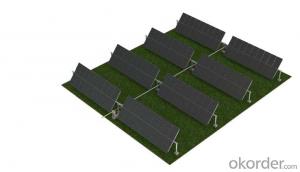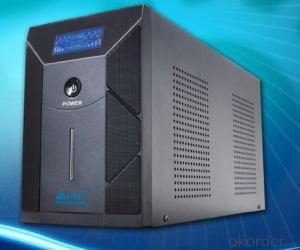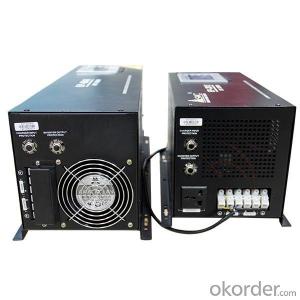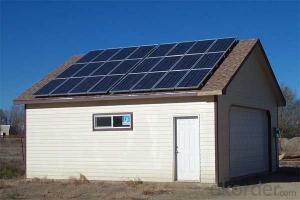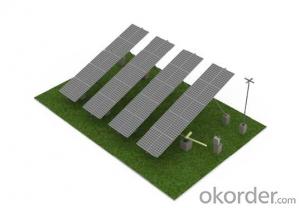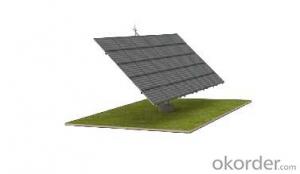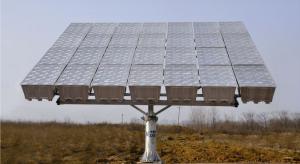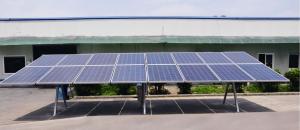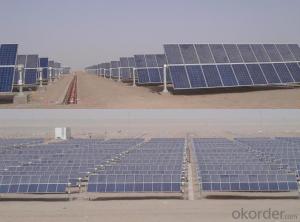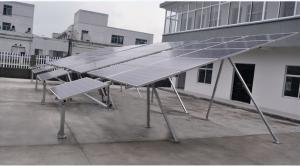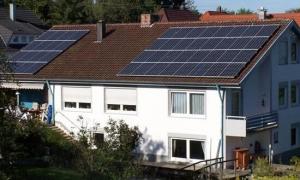Lux Solar Energy Systems Horizontal Single Axis Tracking System Solar Mounting System
- Loading Port:
- China Main Port
- Payment Terms:
- TT OR LC
- Min Order Qty:
- -
- Supply Capability:
- -
OKorder Service Pledge
OKorder Financial Service
You Might Also Like
Packaging & Delivery
Packaging Detail:Normal package seaworthy
Delivery Detail:15 days
Specifications
Easy installation Competitive price TUV&SGS test report & CSA certification 15-warranty
Specifications
1) Super smooth beautiful appearance,outstanding quality,large supply.
2) Available in customized surface finishes.
3) Well machined,for example,cutting,drilling and milling with excellent tolerance.
4) Meet with customer’s designs and supply you best price.
5)Usages:Supply for solar panel modules.
Technical characteristics
Installation site:
ground,hillside,and grassland
Installation angle
it is based on customers’ requirements
Installation height
it is basedon customers’ requirements
Solar panel type; with or without frame
Components arrangement :horizontal or vertical
Support track
aluminum alloy extrusion
Quality warranty
15 years
Advantages
1)Quick installation: with high degree of pre-installed rate, the system could be easily installed by using galvanized carbon steel rails for PV Stent, and specially designed connection parts of the PV bracket, which could reduce installation time and cost greatly.
2)Offer unmatched durability: with all structural components comprised of high class stainless steel and anodized aluminum alloy, it is designed for 25 years service life and backed by 15 years warranty.
3)Stand up to extreme weather: The SuninTek solar mount is designed to stand up to the extreme weather complied with the AS/NZ 1170 and other international structure load standard by the skilled engineer. The main support components also have been tested to guarantee its structure and load-carrying capacity.
4)Provide broad installation flexibility: These systems accommodate most commercially available framed solar panels , and they can scale easily from small to large, multi-megawatt installations.
5)Diversified Application: The PV mounting system produced can be adopted by various types of PV cells panels which you can find in the market. It can serve for both mini solar power system and huge plant with megawatt capability.
Main features
1. Installation cost savings.
2. Save installation time.
3. Increase the mechanical strength of solar energy mounting to ensure that wind requirements.
4. The outdoor for installation of solar energy.
5. Length can be customized according to customers.
6. Service life of up to 25 years.
7. Products through the international certification.
8. Stent material composition of the galvanized steel and aluminum.
9. 15 years system and structural guarantee.
10.Flexible post spacing withstands different wind & snow loads.
11. High quality material in Aluminium 6005-T5 and SUS 304.
12.Screws and nuts go with every components needed.
13.Mechanical calculation and reliability tested to ensure highest product quality.
- Q: Can solar energy systems be installed on historic buildings?
- Yes, solar energy systems can be installed on historic buildings. However, it is important to consider the sensitivity of the building's preservation and design. Careful planning and collaboration with historic preservation experts are required to ensure that the installation does not compromise the architectural integrity of the historic structure.
- Q: How do solar energy systems impact the electricity distribution infrastructure?
- Solar energy systems can have a significant impact on the electricity distribution infrastructure by reducing the strain on the grid. As more homes and businesses adopt solar panels, it decreases the demand for electricity from traditional power plants. This leads to a more balanced and efficient distribution of electricity, reducing the need for costly infrastructure upgrades. Additionally, solar energy systems can generate excess electricity, which can be fed back into the grid and distributed to other users, further optimizing the distribution infrastructure.
- Q: Can solar energy systems be used in powering greenhouses or nurseries?
- Certainly, greenhouses or nurseries can make use of solar energy systems. Solar energy, a source of power that is both renewable and sustainable, can be harnessed by employing solar panels. These panels convert sunlight into electricity, which can then be utilized to power various devices and systems within a greenhouse or nursery. Using solar energy in these environments presents several advantages. Primarily, it helps decrease dependence on non-renewable energy sources like fossil fuels that contribute to greenhouse gas emissions and climate change. By employing solar power, owners of greenhouses and nurseries can significantly lessen their carbon footprint and contribute to a cleaner and more environmentally friendly world. Solar energy systems are also economically efficient in the long term. While the initial installation costs may be higher compared to traditional energy sources, solar panels have a lengthy lifespan and require minimal maintenance. Once installed, they can generate electricity for decades, providing a dependable and consistent power source for the greenhouse or nursery. This can result in substantial energy savings over time, helping to offset the initial investment. Moreover, solar energy systems can be tailored to meet the specific energy demands of greenhouses and nurseries. These facilities often require a steady and trustworthy source of electricity for various functions, such as lighting, heating, ventilation, and irrigation systems. Solar panels can be positioned in a manner that maximizes energy production and ensures a continuous supply of power throughout the day, even during periods of low sunlight. In addition to powering the facility, solar energy systems can also store excess electricity in batteries. This stored energy can be utilized during overcast days or at night when sunlight is not available, ensuring an uninterrupted power supply to the greenhouse or nursery. All in all, solar energy systems offer a feasible and sustainable solution for powering greenhouses and nurseries. They provide environmental benefits, cost savings, and a reliable source of electricity, making them an appealing choice for those in the agricultural industry.
- Q: What is the impact of dust storms on solar panels?
- Solar panels can be significantly affected by dust storms. The build-up of dust and debris on the panel surface can block sunlight, resulting in reduced efficiency and electricity generation. Dust particles act as a barrier, preventing sunlight from converting into electricity, leading to decreased power output and overall performance. Moreover, physical damage can also occur during dust storms. The panel surfaces can be scratched or chipped by abrasive particles carried by strong winds, causing long-term degradation and reduced efficiency. Additionally, the accumulation of dust and debris can raise the panel temperature, further decreasing efficiency. To mitigate the impact of dust storms, regular cleaning and maintenance are crucial. Periodic cleaning removes dust and debris, helping to maintain efficiency and maximize electricity generation. Furthermore, installing tilt systems or self-cleaning technologies can effectively prevent or shed off dust accumulation, minimizing the impact of dust storms. In conclusion, dust storms can negatively affect solar panels, reducing efficiency and potentially causing physical damage. However, proper maintenance and cleaning practices can minimize these effects, allowing solar panels to continue generating clean and sustainable energy.
- Q: Can solar energy systems be used for off-grid living?
- Yes, solar energy systems can definitely be used for off-grid living. Off-grid living refers to living in a location that is not connected to the main electrical grid. Solar energy systems are an excellent solution for off-grid living as they can generate electricity from the sun's energy, providing a reliable and sustainable power source. By installing solar panels and a battery storage system, off-grid homes can meet their energy needs even in remote areas without access to conventional electricity.
- Q: What is the role of solar energy systems in reducing energy waste?
- Solar energy systems play a crucial role in reducing energy waste by providing a sustainable and renewable source of power. These systems harness the energy from the sun and convert it into electricity or heat, which can be used to power homes, businesses, and even entire communities. One of the main ways solar energy systems help reduce energy waste is by offsetting the need for traditional fossil fuel-based power generation. Fossil fuels, such as coal and natural gas, are finite resources that not only contribute to environmental pollution but also produce a significant amount of waste in the form of greenhouse gas emissions. By utilizing solar energy systems, we can tap into an abundant and clean energy source, thereby reducing our reliance on fossil fuels and minimizing energy waste associated with their extraction, transport, and combustion. Additionally, solar energy systems can help reduce energy waste by improving overall energy efficiency. Many solar technologies, such as photovoltaic panels and solar water heaters, are designed to directly convert sunlight into usable energy without any intermediate steps or wasteful processes. This direct conversion process eliminates the need for energy conversion losses, which are typically encountered in traditional energy generation methods. Furthermore, solar energy systems can be integrated with energy storage solutions, such as batteries, allowing excess energy produced during the day to be stored and used during periods of low sunlight, further minimizing energy waste. Moreover, solar energy systems also encourage a shift towards decentralized and distributed energy generation, reducing transmission and distribution losses. Traditional power grids often suffer from significant energy losses during long-distance transmission, with some estimates suggesting losses of up to 8% or more. By installing solar panels on rooftops or in local communities, electricity can be generated close to the point of consumption, minimizing these transmission losses and reducing overall energy waste. In summary, solar energy systems play a vital role in reducing energy waste by replacing fossil fuel-based power generation, improving energy efficiency, minimizing transmission losses, and promoting decentralized energy generation. By harnessing the power of the sun, we can transition towards a more sustainable and environmentally friendly energy future, while also reducing the overall waste associated with conventional energy sources.
- Q: Can solar energy systems be installed in areas with high winds?
- Yes, solar energy systems can be installed in areas with high winds. In fact, it is important to consider wind speeds when installing solar panels to ensure their structural integrity and longevity. Solar panels are designed to withstand various weather conditions, including high winds. Proper installation techniques, such as utilizing strong mounting systems and securing panels with appropriate fasteners, can enhance their resistance to wind damage. Additionally, some solar panel manufacturers conduct rigorous testing to ensure their products can withstand high wind speeds. It is recommended to consult with a professional installer who can assess the specific conditions of the area and design a solar energy system that can effectively withstand high winds.
- Q: How often do solar panels need to be cleaned?
- Solar panels typically need to be cleaned at least once or twice a year to maintain their efficiency. However, the frequency of cleaning can vary depending on various factors such as the location, climate, and surrounding environment.
- Q: Can solar energy systems be used for powering electric vehicle solar charging stations at airports?
- Yes, solar energy systems can be used to power electric vehicle solar charging stations at airports. Solar panels can be installed on the roofs or nearby areas of airports to collect sunlight and convert it into electricity. This clean and renewable energy can then be used to charge electric vehicles at designated charging stations, reducing the reliance on fossil fuels and lowering carbon emissions. Additionally, airports often have ample space for solar panel installations, making it an ideal location for such charging stations.
- Q: Are there any risks of electrical hazards during installation or maintenance of solar energy systems?
- Yes, there are inherent risks of electrical hazards during the installation or maintenance of solar energy systems. These hazards can arise from working with high-voltage DC electricity, improper grounding, accidental contact with live wires, or faulty equipment. It is crucial to follow safety protocols, receive proper training, use personal protective equipment, and engage qualified professionals to minimize these risks and ensure a safe working environment.
Send your message to us
Lux Solar Energy Systems Horizontal Single Axis Tracking System Solar Mounting System
- Loading Port:
- China Main Port
- Payment Terms:
- TT OR LC
- Min Order Qty:
- -
- Supply Capability:
- -
OKorder Service Pledge
OKorder Financial Service
Similar products
Hot products
Hot Searches
Related keywords
